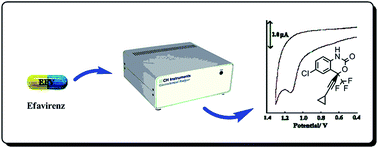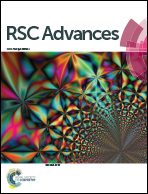NiO–ZrO2 nanocomposite modified electrode for the sensitive and selective determination of efavirenz, an anti-HIV drug
Abstract
The present study reports the synthesis of NiO–ZrO2 nanocomposites followed by their characterization using X-ray powder diffraction, high-resolution scanning electron microscopy, high-resolution transmission electron microscopy and energy dispersive X-ray spectroscopy. A new chemically modified glassy carbon electrode was fabricated based on the synthesized nanocomposite and used as a highly sensitive electrochemical sensor for the determination of efavirenz, an anti-HIV drug. The modification increased the effective surface area of the sensor ten times in comparison to the bare glassy carbon electrode. Cyclic voltammograms revealed that the modified electrode exhibits excellent electrocatalytic activity towards oxidation of the drug. The current displayed a wide linear response ranging from 0.01 to 10 μM with a detection limit of 1.36 nM. The effect of interferents on the peak current response was studied. The electrode displayed advantages such as simple preparation, appreciable stability, reproducibility and high sensitivity. The feasibility of the proposed method was successfully demonstrated by determining efavirenz in commercial pharmaceutical formulations and human urine samples.


 Please wait while we load your content...
Please wait while we load your content...